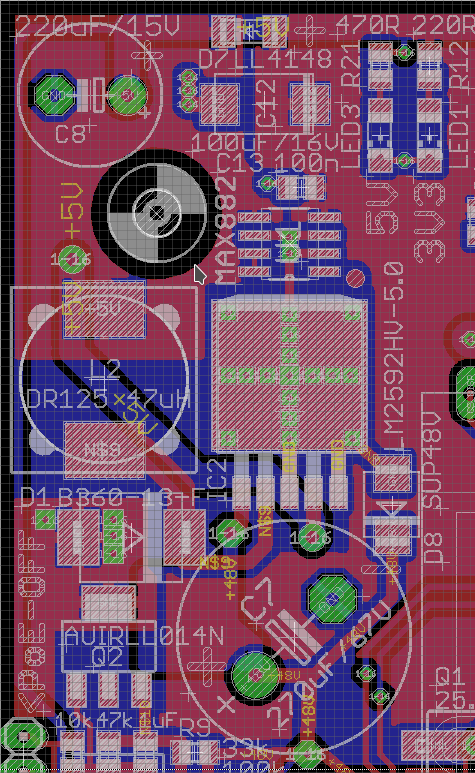Hello.
I developed a device that can be operated by 24V as well as Power over Ethernet.
Power consumption is 1.5-2A (peak) at 5.0V, so I decided to take a LM2592HV-5.0.
I produced 50 prototypes and all of them worked perfectly with 47uH inductor. Now I started series production and almost every LM2592HV is immediately damaged when the device is connected to PoE, while it works fine at 24V DC.
Reading the datasheet very carefully, I noticed that care must be taken special care on the inductor when the operating voltage is above 40V. This is the case when PoE is used, then 48V is normal. So I finally increased the inductor to 100uH. This should now definitely be more than sufficient. I also added a TVS diode to the input capacitor to ensure that the voltage never will exceed 55V (still 5V in spare).
Still, it happens in 9 of 10 cases that the LM2592HV dies in fractions of a second on PoE.
Hope that somebody can help me. At the moment I do not really need PoE, but it would make life much easier.
I made a screenshot of the schematic:
A short description, at the beginning only 25k are connected in parallel to the PoE supply. This is the required resistance for specifying Class 1. Only when the input voltage rises to 48V (before I cannot connect such high load or the PoE supply with shut off), the MOSFET is enabled. Now the entire switching supply is powered up and starts working. As 24V will not trigger the mosfet (-> 24V Zener diode), JP3 has to be closed for operating the device on any input voltage in range of 12..40/60V.
Here is the screenshot of my PCB layout. Blue is bottom side, red is top side of two-sided PCB:
Because I need 5.0V and also 3.3V (with only 100mA), I use a low drop linear regulator (MAX882) for making 3.3V from 5.0V. In the layout you find the 47uH inductor I used in 50 prototypes. I replaced it with 82uH and also 100uH, this made the situation slightly better, but still far away from reliably working without a damage on the LM2592HV.
I hope that somebody can help me fixing the problem. I see no fault in my design.



